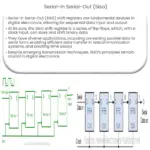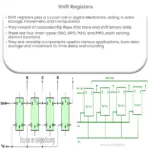Explore the concept of One-Shot Generators in programming. Discover their working, benefits, applications, and limitations in modern data processing.

Understanding One-Shot Generators
As the world continues to progress digitally, programming paradigms keep evolving to meet growing requirements. One such paradigm shift is visible in the arena of generators, specifically One-Shot Generators. Let’s take a closer look at what these are, their significance, and their applications.
Defining One-Shot Generators
A ‘generator’ in programming refers to a routine that allows you to iterate over a sequence of values. Unlike a standard function that returns values one at a time and forgets its state, a generator yields values one after the other, preserving its internal state in between.
One-Shot Generators, as the name suggests, are generators that can only be iterated over once. They produce values on-the-go and do not store the entire sequence in memory. Thus, they offer a way to create data streams that are too large to fit into memory. However, since they do not retain their state, they cannot be rewound or reused. Once iterated over, a one-shot generator is exhausted and cannot be iterated over again.
Working of One-Shot Generators
To understand the working of one-shot generators, let’s consider a simple example of a Python generator:
-
def count_up_to(n):i = 1while i <= n:yield ii += 1
This generator, named 'count_up_to', yields numbers from 1 up to a certain number 'n'. After 'n' is reached, the generator becomes exhausted and stops yielding new values. Each time 'yield' is encountered, the generator's state is preserved, enabling it to continue where it left off during the next iteration. Yet, once completely iterated, it can't start over or rewind. This is the fundamental property of a one-shot generator.
Benefits of One-Shot Generators
One-Shot Generators offer a host of benefits:
-
Memory Efficiency: One-shot generators are memory efficient as they only generate one value at a time instead of storing the entire sequence in memory.
-
Scalability: They can handle large data streams that do not fit in memory, making them scalable for big data applications.
-
Performance: Since they don't need to allocate memory for the entire sequence, they can offer better performance compared to conventional sequences or lists.
Applications of One-Shot Generators
One-Shot Generators have a myriad of practical applications:
-
Data Pipelining: One-shot generators are essential tools in building efficient data pipelines, where each component of the pipeline can be modeled as a generator. The data flows through the pipeline one piece at a time, allowing efficient memory usage and quick processing.
-
Stream Processing: One-shot generators can process infinite data streams, making them ideal for real-time stream processing. Examples include handling live social media feeds, real-time analytics, and IoT sensor data processing.
-
File Processing: They are also used in processing large files that cannot fit in memory. The file content is read and processed line by line or chunk by chunk using one-shot generators.
Limitations of One-Shot Generators
Despite their numerous advantages, one-shot generators have limitations:
-
No Rewind: Once iterated over, a one-shot generator cannot be reset or rewound to generate the values again. This restriction requires careful planning when using one-shot generators, especially when the data needs to be processed multiple times.
-
No Random Access: Generators provide values in a sequence, meaning there is no way to access values at a random index like in lists or arrays. One must iterate through the generator to access the required value.
Conclusion
In conclusion, one-shot generators are a powerful and essential tool in modern programming paradigms. While they present limitations in terms of no rewind or random access capabilities, their advantages in memory efficiency, scalability, and performance are undeniable. As data grows in volume, velocity, and variety, the use of one-shot generators will continue to be paramount in handling large data streams and constructing efficient, scalable data processing pipelines. Despite their 'one-shot' nature, they provide a potent 'one-shot' solution to many programming challenges.




